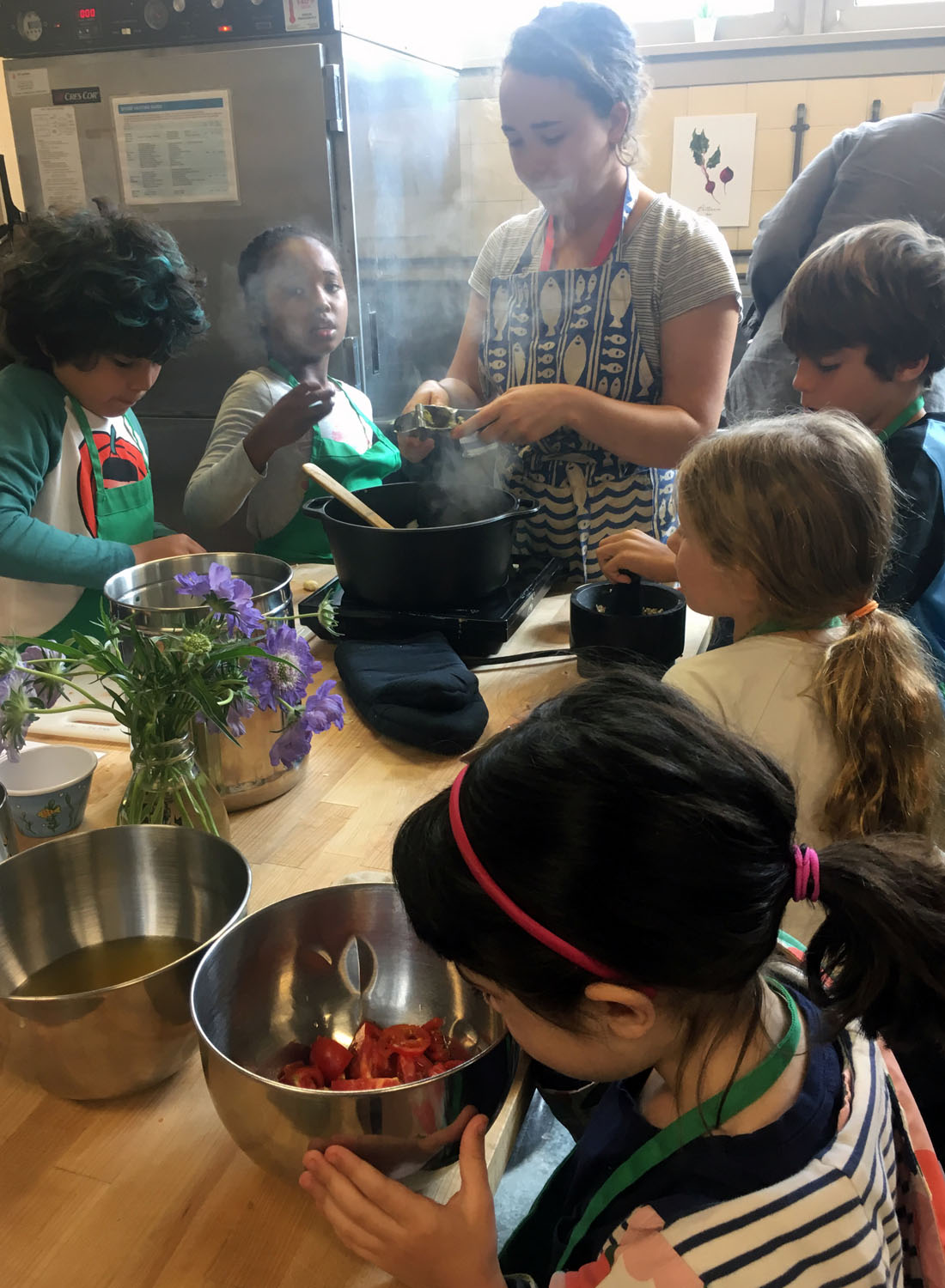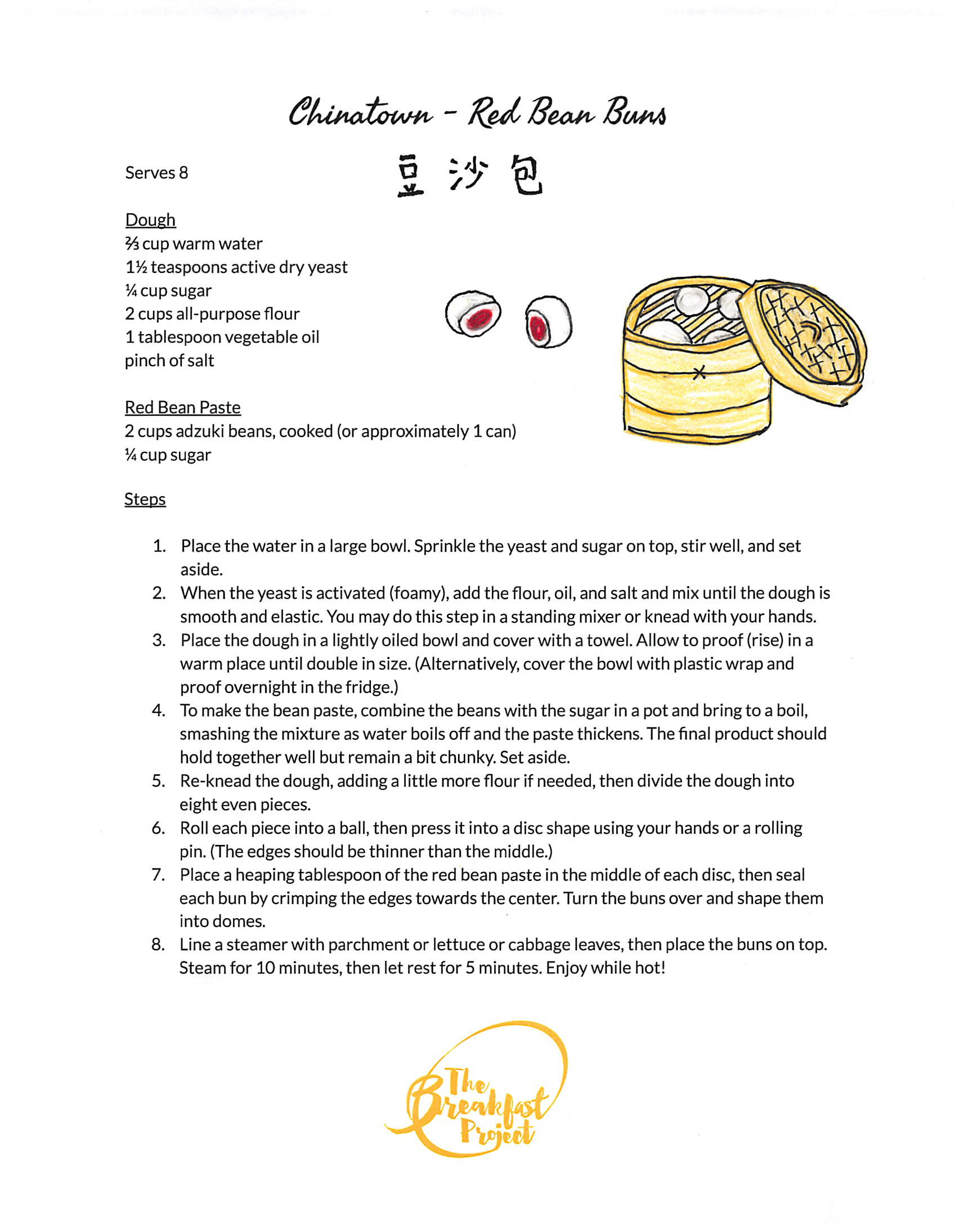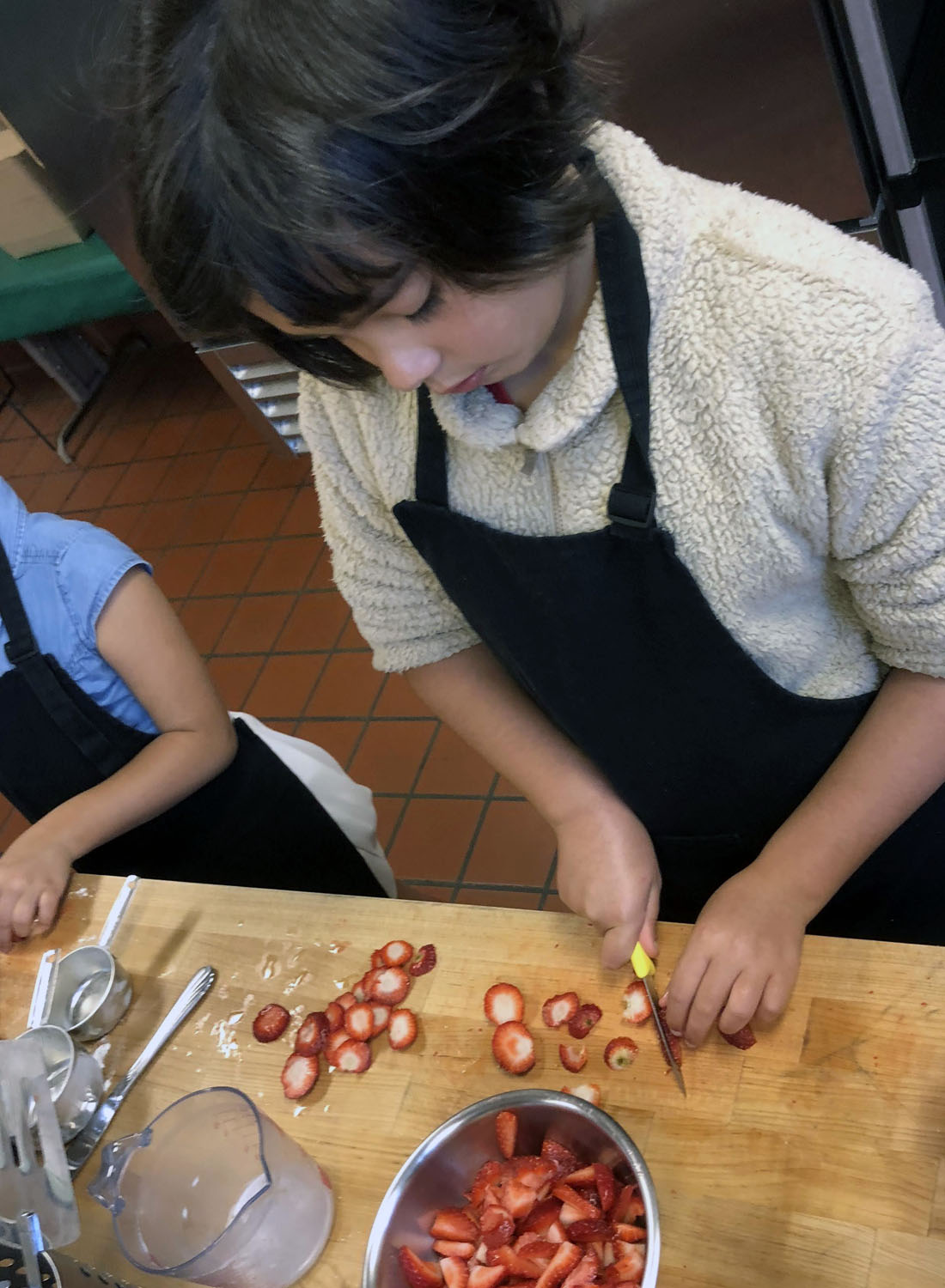This week we worked with a beautiful leafy vegetable from the African-American culinary tradition, collard greens. We linked the concept of dipping bread in pan juices from our experience eating injera and lentil stew from Ethiopia to the tradition of dipping cornbread into the potlikker from the slow cooking of collards in the American South. While collard greens are not native to Africa or the Americas, the dish we know today is an example of how cooks (in this case enslaved people from Africa) took a new ingredient they found in colonial America starting in the 1600s and paired it with a tradition from home (slow-cooking greens and drinking the resulting juices).
The students were very excited to work with a rare ingredient at The Breakfast Project - bacon! We all had a lot of fun ripping the greens with our hands, rendering the bacon, and tasting the final dish to adjust the seasonings. My table added a little extra apple cider vinegar at the end, and every single student asked for seconds.



























































































































































































































